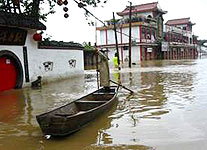 China Faces Flood and Drought This Summer
China Faces Flood and Drought This Summer
China faces a severe situation in flood control and drought relief this summer, warned Zhang Zhitong, deputy chief of the Office of the State Flood Control and Drought Relief Headquarters, at a press conference Friday morning.
| 